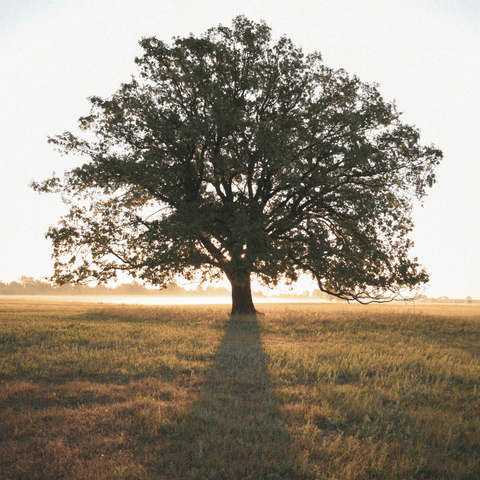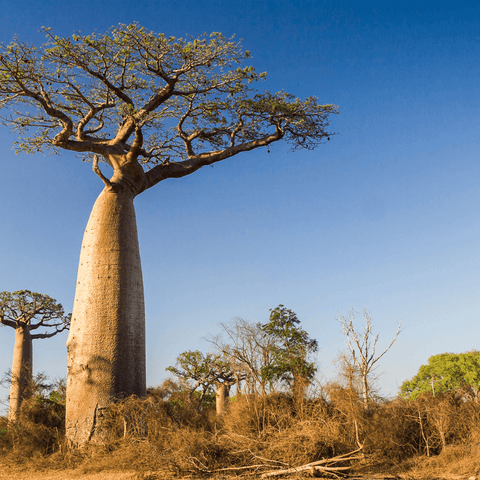Tree Of Life Meaning Through 11 Cultures
Introduction
From ancient cultures like the Celts and the Mayans, Nordic mythology, and Buddhism, the Tree of Life is a symbol of mystic energy which appears in numerous civilizations.
The Tree of Life or the Tree of Knowledge is in folklore and mythology from almost everywhere in the world.
The trunk of the Tree of Life represents stability, the roots are a stable base, the branches offer nourishment, the leaves represent power, and the fruit represents sacrifice by offering oneself.
The connotations of the Tree of Life differ slightly from society to society. However, the idea that the same tree connects the physical and spiritual realms is a common feature in all of them.

Key Takeaways
- Ancient Egypt: Symbol of regeneration and immortality, often depicted in tombs and associated with the goddess Isis.
- Celtic Culture: Represents the interconnectedness of all life, with roots in the earth and branches reaching the heavens.
- Judaism: A central symbol in the Kabbalah, embodying the divine connection, wisdom, and the interconnectedness of all creation.
- Christianity: Reflects themes of immortality, resurrection, and the connection between heaven and earth.
- Islam: Known as the Tree of Immortality in Islamic tradition, symbolizing eternal life and knowledge.
- Buddhism: The Bodhi tree under which Buddha attained enlightenment, representing wisdom and the path to enlightenment.
- Hinduism: Symbolizes creation, preservation, and destruction (Brahma, Vishnu, Shiva), and the continuous cycle of life.
History and Origin of the Tree of Life
Ancient Roots
The Tree of Life symbol has ancient origins, with the earliest known example discovered in Turkey during the Domuztepe excavations around 7000 BC.
Acadian Symbolism
The Acadians, around 3000 BC, had a comparable symbol resembling a pine tree. This representation, inspired by the longevity of pine trees, is considered an early depiction of the Tree of Life.
Mythological Significance In Ancient Egypt
The Tree of Life holds profound significance in ancient mythologies, including Ancient Egypt. Its presence predates the Celtic interpretation, showcasing its widespread cultural importance.
Pre-Celtic Discoveries
Symbols resembling the Tree of Life were discovered in Northern England around 1,000 years before the Celtic association with the symbol. This indicates a pre-Celtic presence of the motif.
Celtic Tree Of Life
The Celtic rendition of the Tree of Life dates back to around 2000 BC. The Norse also had a version, envisioning a global ash tree as the foundation of life on Earth.
Circular Design In Norse And Celtic Cultures
The Norse and Celtic representations of the Tree of Life differ from other cultures. They adopt a circular design, symbolizing a tree of eternal life within a circle that connects the upper and lower worlds.
The interconnected roots and branches emphasize the unity of life.
A Connection to Everything
The perfect illustration of natural interconnection is through trees. According to a new study, trees have an intricate conversation with their surrounding neighbors.
They "talk" to one another through pheromones and interlinked root systems.
Everything is tied to the Tree of Life. It symbolizes unity and reminds us that we are not alone but part of the whole. This helps the personal growth journey of any human being in need of it.
The Tree of Life is often represented as a gigantic tree with roots that reach deep into the earth and branches that reach high into the sky.
This signifies the intertwined nature of everything in the cosmos and a timeless bond between the physical realm and the spiritual realm.
Family
The roots and branches depict how a family grows and stays bonded through time. This symbolism is present when we utilize family trees to display our ancestry.
Therefore, the term' family tree' is frequently used when discussing our ancestors.
The Tree of Life sign indicates a connectedness to the family through its complex branch pattern, with shared roots connecting us to the previous and future descendants.
A tree's life is often compared to the growth of a community: a tree sprouts from a seed, and as it expands and spreads out, it produces new fruit and energy for the next generations.
Growth And Strength
Trees are among the world's longest-lived organisms, with some species lasting for up to 5,000 years. They begin as small seeds and progressively grow to enormous proportions.
To see a seedling grow into a tree is a profound involvement that many cultures value in terms of spirituality and religion.
Trees are the ultimate sign of unshakable endurance, surviving cold, floods, extreme heat, and droughts.
These magnificent organisms can thrive and survive in the roughest environments while also adapting to the passage of time.

Rebirth
The tree loses its leaves in the winter and looks as if it has died. However, by Spring, there is a fresh start with new buds and leaves.
As a result, the tree is associated with rebirth. It also represents immortality since the tree produces seeds that carry on its spirit.
Peace
The tree also represents peace. It is tall, peaceful, and quiet, and it helps to chill the area. As a result, it serves as a reminder to keep calm and encourage peace. A tree evokes a sensation of tranquility.
You're familiar with the peaceful sensation that comes with it if you've ever sat under or meditated under one.
Tree of Life Meaning in Ancient Cultures
Christianity
The biblical account depicting the famed tree of knowledge in Eden is an important story in the Christian religion. Therefore, the tree of Life pendants are often worn to symbolize God's love.
In the Bible, Adam and Eve ate an apple from the Tree of Knowledge and were aware of their sins. For their safety, the tree was forbidden to both. However, they were mindful of the world's good and evil after tasting the fruit.
They were then able to discern between good and evil, pleasure and sin. After that, they got banished from Eden, searching for a new life.
The Book of Genesis clarifies that Adam and Eve were never to eat the fruit of only one tree, the Tree of Knowledge.
The World Tree in Buddhism
Bodhi Tree In Buddhism
In Buddhism, the Bodhi Tree is known as the Tree of Knowledge. It holds immense significance as Buddha achieved spiritual enlightenment while meditating under it. Trees, in general, are highly revered in Buddhism, symbolizing enlightenment and the attainment of nirvana.
Celtic Tradition And Tree Of Life
In Celtic tradition, the Tree of Life is considered powerful and is associated with special abilities. Trees, particularly in the Otherworld, are seen as ancestral protectors.
The Celtic Tree of Life symbolizes a connection with ancestors, ancient druids, and family.
Adoption Of Norse Tree Of Life
The Celts adopted the Norse Tree of Life symbol, depicting the world ash tree known as Yggdrasil. This symbol became universal among the Celts, signifying various aspects of life and spirituality.
Sacredness Of Trees In Celtic Culture:
Trees held sacred status in Celtic culture, with each type having its mystical significance. The Celts believed that humans transformed into a Tree of Life upon death, contributing to the cycle of life.
Symbolism Of Natural Cycle
Observing the changing seasons of trees, from losing leaves to blooming and bearing fruit, the Celts associated trees with the cycle of life and rebirth. This perspective was shared by other ancient cultures.
World Tree And Connection To Spirit World
The Tree of Life symbolizes a connection to the underworld through its roots and extends branches into the sky. This World Tree served as a link between the spirit world and humans, signifying protection and knowledge.
Islam and the Tree of Life Symbolism
In the Quran, there is also a Tree of Life. The Tree of Immortality, also known as the Tree of Life, can be found in Eden's Garden.
In the Quran, Allah warns Adam and Eve not to eat the fruit on the Tree of Immortality, as they were told in the Bible.
Because they ate from the tree, Allah banished Adam and Eve to Earth, where they must live and learn to repent of their transgressions.
Allah tells them, however, that they will be guided while on Earth. As a result, in the Quran, the Tree of Life represents both repentance and learning from one's faults and the mercy of God.
Tree of Life in Judaism
In Judaism, it is distinguished from the tree of knowledge that represents evil and good. Instead, it's a tree that feeds and supports life and a person's personal growth. It is in the midst of Yahweh's garden.
The Tree has been described in Jewish mysticism as ten interconnected nodes.
Kabbalah is an ancient kind of Judaism mysticism whose supporters believe it dates back to the beginning of time. Kabbalah rose to prominence in written history throughout the 12th and 13th centuries in France and southern Spain.

In essence, practitioners of Kabbalah believe that we all have a direct relationship with God or the source of creation, like spirituality in other religious beliefs.
The Tree of Life is depicted in Kabbalah as a symbol with ten Sefirot, or divine energy and spiritual paths. Outside and inside the human body, this heavenly life energy flows.
The Sefirot are like the chakras in Eastern religions in this way.
RELATED: 113 Marvelous Growth Mindset Quotes To Break Down Barriers To Success
The Norse World Tree
It is also known as the Viking Tree of Life in Nordic mythology. However, the Yggdrasil Tree was the name given to it by ancient Nordic people.
The huge tree sprang out of the Well of Urd, a never-ending lake that stored global wisdom and other strong cosmic powers.
The roots and branches of the Yggdrasil Tree held the Nine Worlds of the Galaxy united. The tree's vitality was so crucial that the entire world's well-being depended on it.
Odin, the Nordic god, desired the knowledge found in the Yggdrasil Tree. To show his devotion to the mission, he sacrificed his eye and threw himself on his spear, then hung himself for nine days from a tree branch, nearly losing his life in the act.
He did, however, survive, obtaining knowledge from the Universe in the process.
Egypt and the Tree of Life
In ancient Egyptian mythology, it is believed the Tree of Life symbolizes the duality of life and death. The branches of the single tree standing symbolize holy abundance. The roots of this massive tree represent ties to the netherworld.
The ancient humans of Egypt believe it to date back to at least 3150 BC. According to Egyptian mythology, after the Universe was created, the deity Geb, their Earth's God, and Nut, the Sky Goddess, gave birth to their son Osiris.
He became the world's first ruler. Other gods were born after him, including Isis, who later became his wife.
Pillar in Byblos
When the king of Byblos, Malcander, came across the tree, he sensed a wonderful fragrance coming from its trunk.
He was so taken with the Tree of Life that he had it removed and turned it into a pillar. On the other hand, Isis was still on the search for her lost spouse.
She could smell the beautiful scent emanating from the pillar where Osiris was encased as she passed by.
The king told her she could have anything she desired once he discovered Isis was a goddess. She, of course, requested the pillar, which the king graciously granted her. Isis took it back to Egypt and re-planted it.
The Egyptian Tree of Life is based on a tree that changed into a pillar, then back into a tree. Another Egyptian mythology suggests that acacia trees gave birth to all the gods.
The Tree Symbol in Africa
The baobab tree is the most closely associated with the Life Tree in Africa. Such a tree was formed by God, according to origin legends from all around Africa.
The baobab tree predates humans, so they have been in Africa as long as the population has.
Baobab trees were thought to have mystical qualities by several African cultures. Picking the white blooms from the tree, for example, would attract a lion who would eat you.

Crocodiles would be less likely to attack you if you drank baobab seeds soaked with water. Likewise, soaking a newborn in water with baobab bark would make the child as tough as the baobab tree.
Greek and Roman Mythology
Greek Mythology And Magical Trees
Greek mythology is rich with legends featuring magical trees, such as the World Tree or the Tree of Life. One story tells of Zeus marrying Gaia, the goddess of the Earth, and a great oak tree emerging from their union.
Zeus And Osiris Connection
Zeus and Osiris are depicted as becoming one with the tree in various tales. The legends emphasize the interconnectedness between the roots and branches, symbolizing ties to the underworld and stars.
Hera's Apple Tree
In a tale involving Hera and Zeus's marriage, Gaia presents Hera with a mystical apple seed for her garden. Hera's apple tree, like other Trees of Life, is believed to uphold the balance of the Universe. To protect the tree, Hera enlists the help of a dragon.
What the Mayan Tribe's Tree Symbolizes
This Mayan tribe believed that Heaven was hidden behind a mystical mountain. A Tree of Life developed at the place of creation full of life force, connecting the Underworld, Heaven, and Earth. Everything spread out in four directions from that point.
The core of the Mayan Tree of Life is a cross, which represents the root of all life. Connecting the physical world with the spiritual.
How to Use the Tree of Life to Call in Good Luck and Abundance?
Ancient Use In Accessories
The Tree of Life symbol has a historical presence in accessories, dating back to ancient times. Jewelry crafted from various materials like stone, wood, and bronze featured this emblem.
Modern Adaptations
Today, the Tree of Life pendant has evolved into a versatile accessory, serving not only as jewelry but also as an ornament or a symbol of good luck within homes.
Symbolic Meaning
Regardless of its form – be it worn as jewelry, incorporated into clothing, or even tattooed – the Tree of Life maintains its symbolic significance. It embodies themes of growth, peace, and a profound connection with the Earth.
Frequently Asked Questions
What does the Tree of Life represent in Norse mythology?
In Norse mythology, the Yggdrasil tree symbolizes the interconnectedness of the cosmos, serving as a cosmic axis connecting different realms like Asgard, Midgard, and Hel.
How is the Tree of Life depicted in Celtic traditions?
In Celtic cultures, the Tree of Life is often represented as a sacred tree with branches reaching into the sky and roots delving into the earth, symbolizing the connection between the heavens and the earthly realm.
What is the significance of the Bodhi Tree in Buddhism?
In Buddhism, the Bodhi Tree represents enlightenment, as Siddhartha Gautama, the Buddha, attained enlightenment while meditating under its branches.
How is the Tree of Life portrayed in Hinduism?
In Hinduism, the Ashvattha tree symbolizes the eternal nature of life and the cyclical pattern of creation, preservation, and dissolution.
What role does the Tree of Life play in Native American cultures?
Native American cultures view the Tree of Life as a symbol of wisdom, strength, and the interdependence of all living beings. Different tribes may have unique interpretations and depictions.
How does the Tree of Life relate to ancient Egyptian beliefs?
In ancient Egypt, the Tree of Life symbolizes regeneration, growth, and resurrection, often associated with the goddess Isis and the afterlife.
What is the biblical significance of the Tree of Life?
In Christianity, the Tree of Life is mentioned in the Book of Genesis, representing eternal life and divine knowledge. It is often associated with paradise and the Garden of Eden.
Can the Tree of Life have a modern or personal interpretation?
Yes, the Tree of Life continues to be a source of inspiration and personal interpretation in contemporary contexts. Many individuals adopt the symbol to convey themes of growth, strength, and interconnectedness in their lives.

